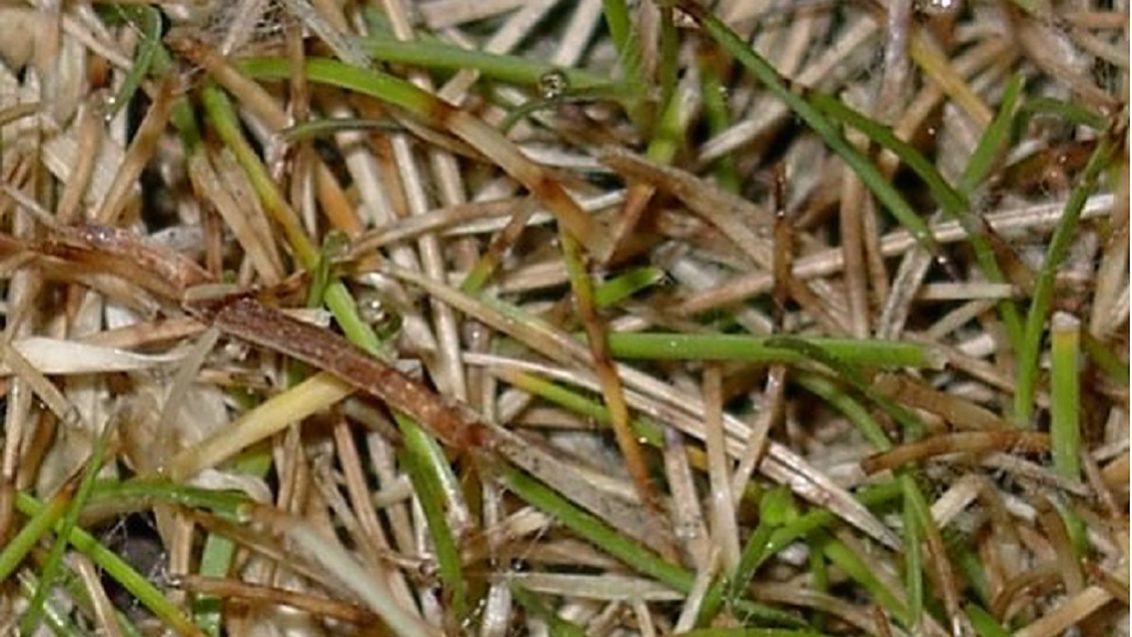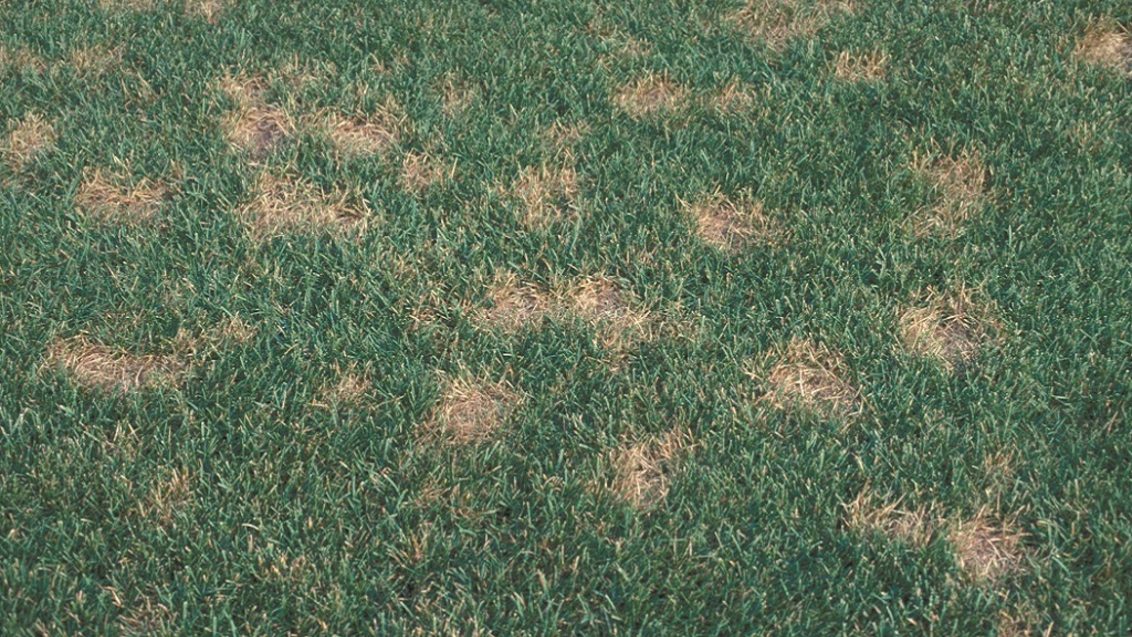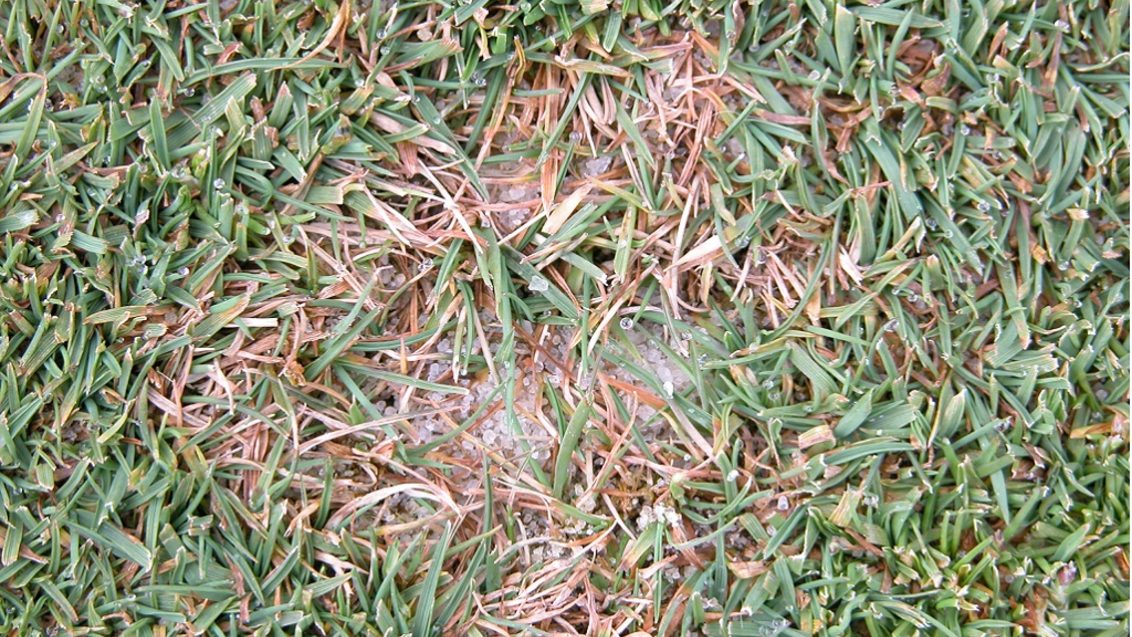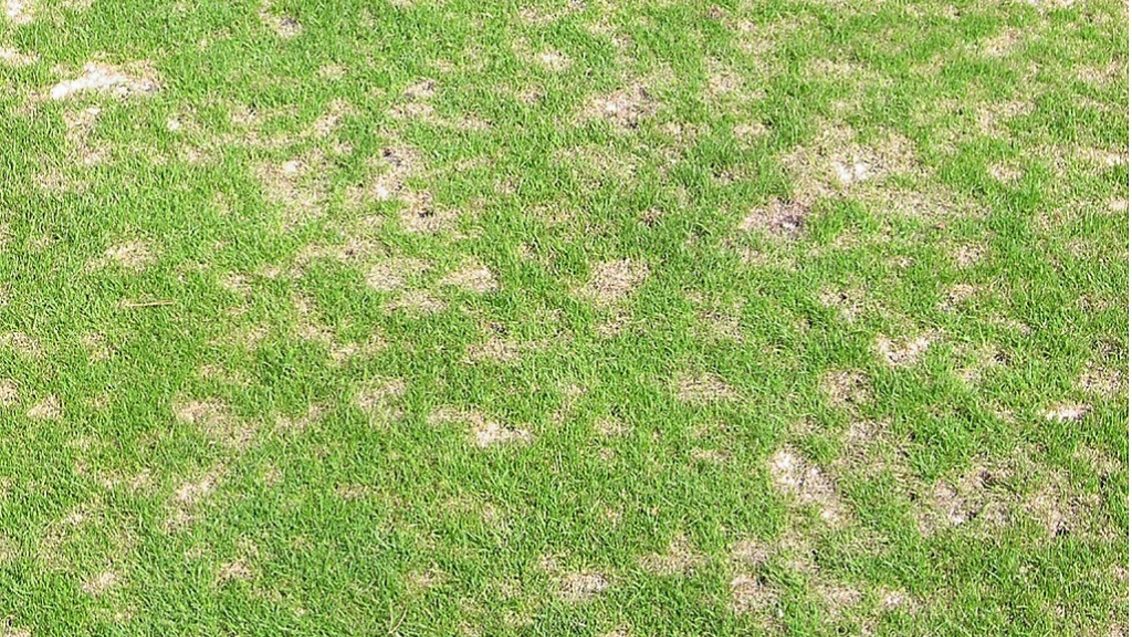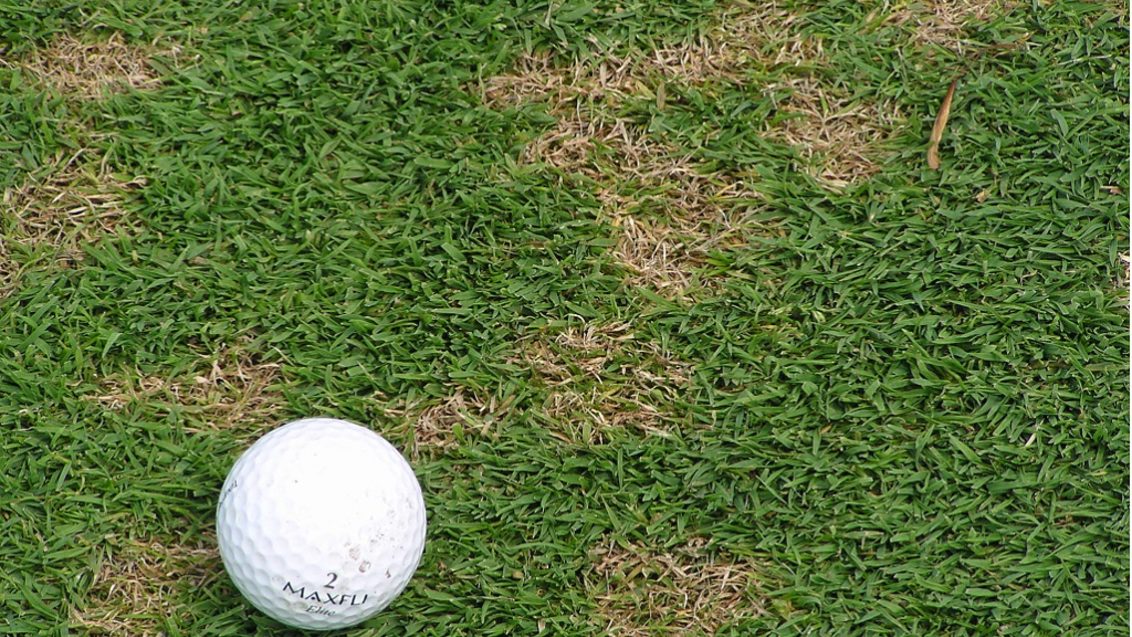Dollar spot
Turf Disease
Dollar spot lesions on leaves are a pale, bleached colour. They are bound at either end by a darker reddish-brown band separating the affected tissue from the healthy green tissue. Small (dollar size) spots of bleached turf occur on close mown grass (Plate 3). The spots may coalesce to form large areas of affected turf (Plate 4). White mycelium may be present on affected areas on dewy mornings, which disappear as the leaves dry.
Where is dollar spot found?
Any area of turf, especially golf greens, tees, fairways and bowling greens. In the UK, fescue dominant swards are at high risk of infection. Poa annua grass can also be severely affected.
When is dollar spot likely to attack turf?
During the summer months, when the daytime temperatures are above 20ºC. Humid or thundery conditions can encourage an outbreak, as can heavy dews. Low fertility swards are at more risk from dollar spot.
Find out more about dollar spot risk assessment with Turf Advisor
Effects of dollar spot
The spots reduce the aesthetic appearance of fine turf, such as golf greens and create an uneven surface causing non-uniform ball roll. On longer cut areas, such as tees, playability may not be affected (unless the outbreak is very severe) but the aesthetic appearance will be reduced.
High Risk Situations
- Heavy morning dew
- Daytime temperatures 20ºC and above
- Low fertility situations
- Excessively low cutting heights
- Fescue dominant sward, although there is variation among subspecies and cultivars. Poa annua grass is also susceptible. Other turf swards including bentgrass are also affected, although susceptibility varies depending on cultivar
- Slow growing turf
- Moisture retentive turf surface
Integrated Turf Management
- Dollar spot can be more severe when the sward surface is moist but the underlying soil dry. Therefore, irrigation should be sufficient to ensure moisture to the depth of the rootzone. Air movement over the sward surface should be encouraged.
- Dollar spot is more prevalent under low fertility, especially nitrogen. Therefore, adequate fertiliser should be applied to prevent low nutrition occurring.
- Soil compaction and the presence of thatch layers have also been shown to promote dollar spot. Regular aeration will reduce compaction and encourage the removal or breakdown of any thatch layer reducing the potential for severe outbreaks.
- Use Turf Advisor to identify periods of high risk, using the Smith-Kerns model and other risk factors. Set up a specific dashboard for dollar spot that is referred to daily during high risk periods, incorporating all weather factors that influence disease risk.
Preventative applications of fungicides will provide longer term control of dollar spot and ensure optimum playing quality of the turf. During periods of turf growth systemic products will move inside the plant, protecting new growth and avoiding product being quickly mown off.
The following products have label recommendation for dollar spot control in the UK:
|
|
| ||
Mode of action | Dual Systemic |
| Contact + Systemic |
|
Dose rate | 3 l/ha |
| 3 l/ha |
|
Water volume | 125-500 l/ha |
| 500 - 1000 l/ha |
|
LERAP |
|
| B |
|
Suggested Programme
Use the Smith-Kerns model in the Turf Advisor app to monitor periods of disease pressure and target application timings. Where the model indicates a local disease pressure of 20% or above can lead to increased risk of dollar spot outbreaks in turf.

Apply preventative application using an appropriate fungicide to the growing conditions, resistance management rotation of active ingredients and label stipulations.
Always use fungicide treatments as part of an Integrated Turf Management strategy, utilising all practical cultural controls for the situation.

